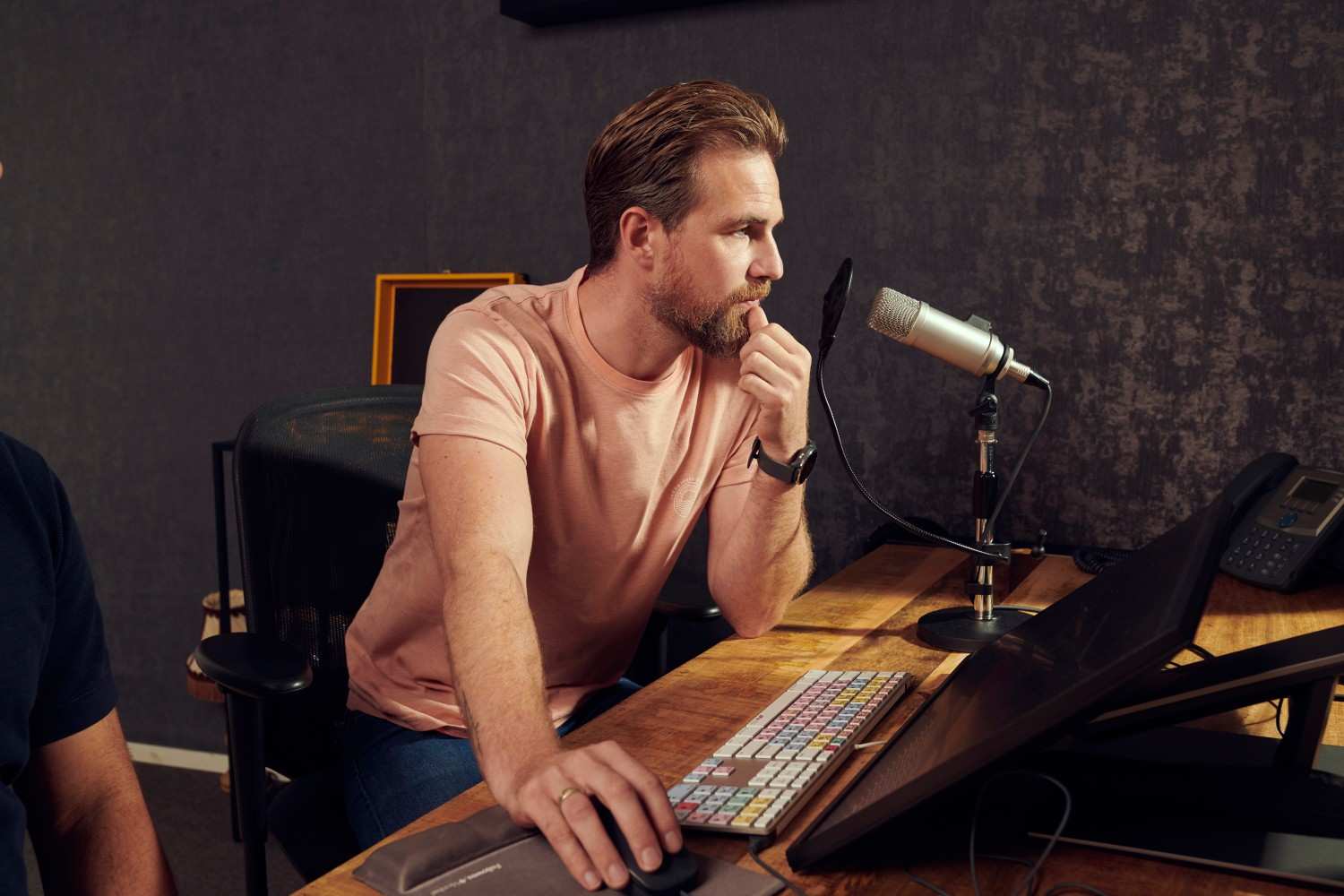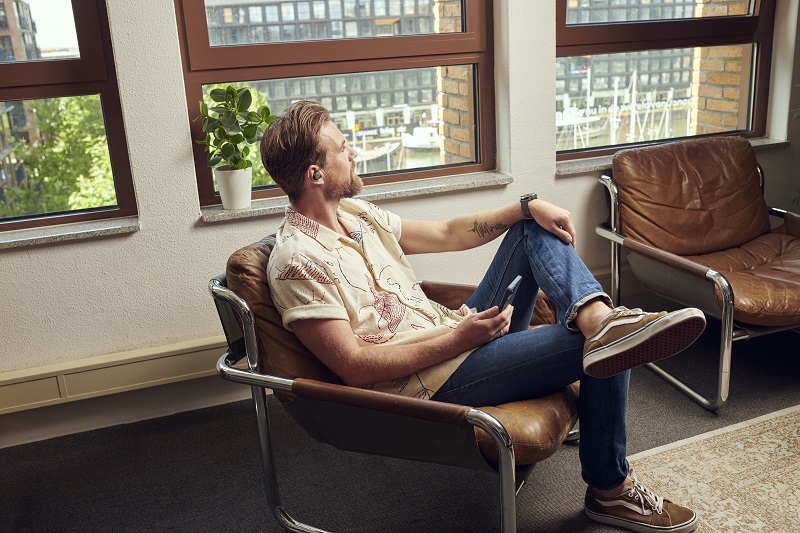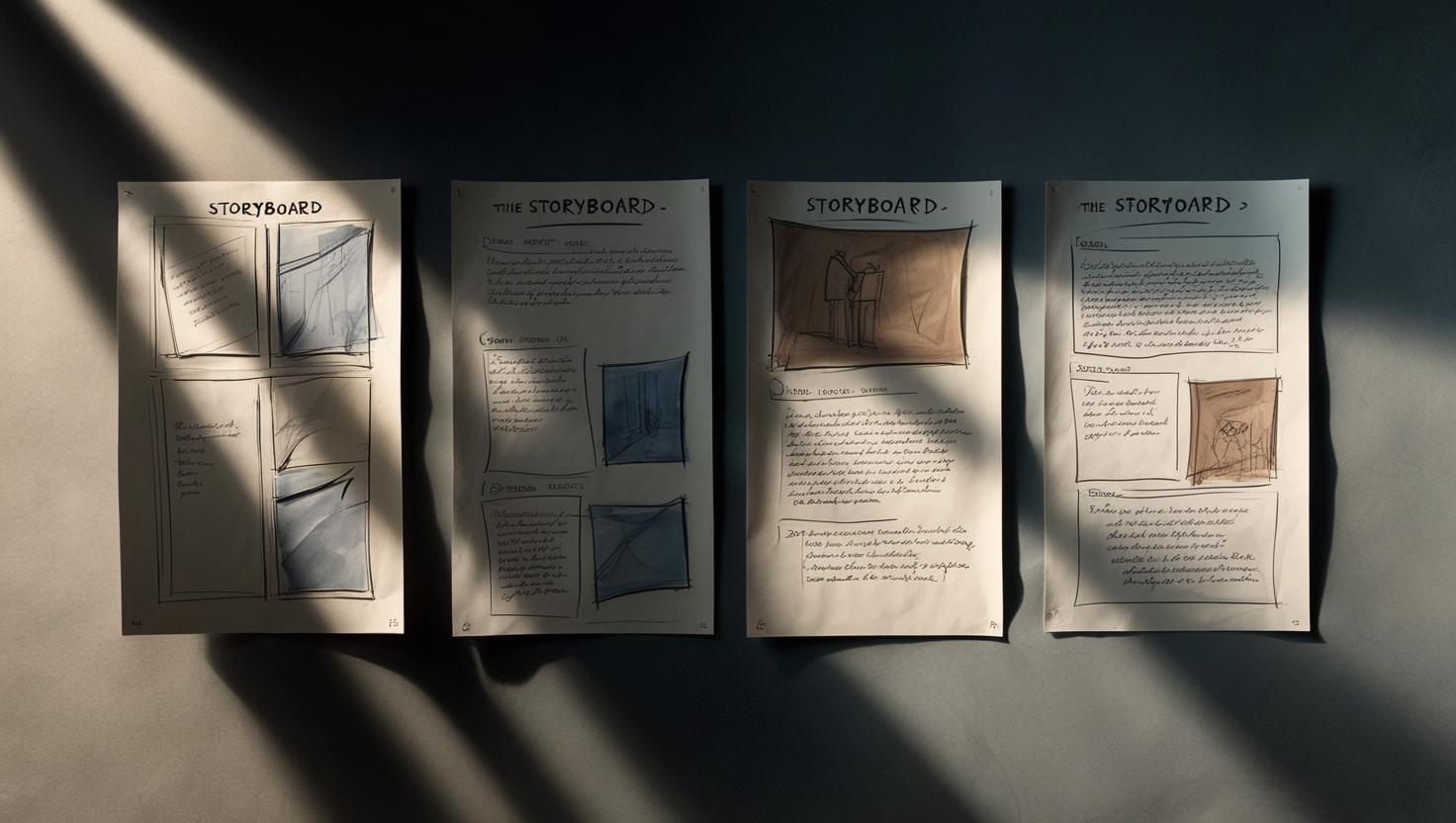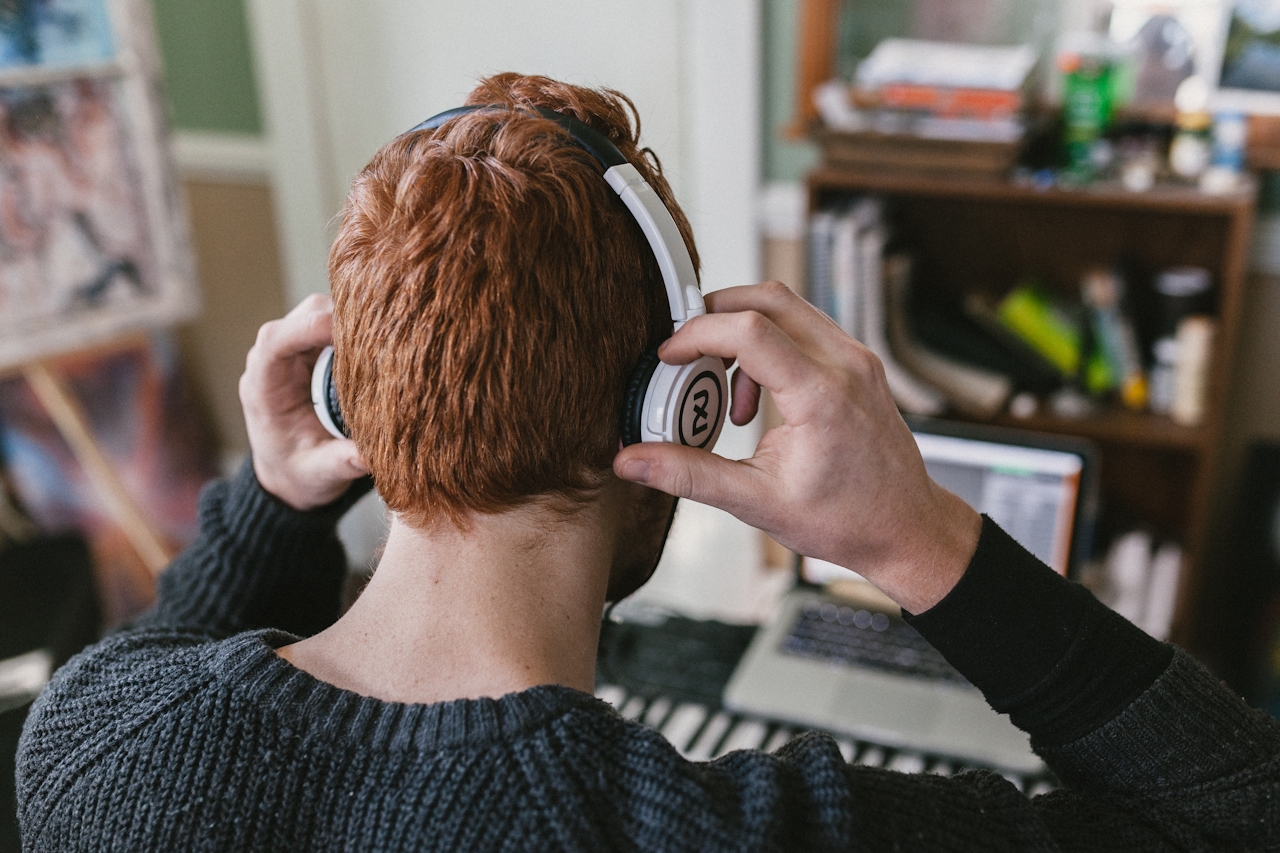Did you know that we have magicians among us? Sound magicians to be precise! Our team of audio engineers can add magic to any audio project! One of their specialties lies in the art of perfecting audio balance through mixing and mastering. In this interview session, our Head of Audio Productions, Giel, provides his insights on the topic and shares his experience as an audio engineer.
What are the key differences between mixing and mastering?
When mixing audio, you typically work with three different tracks: The voice-over, the music, and the sound effects. The main objective of the mixing process is to achieve a perfect balance between these tracks. We ensure they don’t interfere with each other. You want the voice-over to sound clear, the music to have the right energy, and the sound effects to create the desired atmosphere.
In most cases, when you simply layer these tracks together, you will not hear the voice-over clearly. But you cannot simply pull down the music volumes, it will affect the overall feel of the track. You need to pay close attention to detail. For example, music can be lowered when there is a voice over, and heightened when there is no voice over. That’s the main idea behind mixing.
Mastering on the other hand is the final step in audio production. It’s the process where we, the audio engineers, fine-tune and prepare a final mix. We make sure the sound is perfect for the platform where it is distributed. This process involves applying equalisation, compression, and other processing techniques to enhance the sound and ensure consistency across all tracks.
The goal of mastering is to optimise the audio for its intended listening environment and format, such as streaming platforms, TV, or radio.
How important is mixing and mastering in content production?
Mixing and mastering are crucial in content production. They highly impact the audio quality of the final product. Without these processes, the audio may be imbalanced, or it can be challenging to understand the voice-over. The music can either be too overpowering, or too low, this may lead to a poor audio experience. To achieve a high-quality end product, audio must be well-mixed and mastered.
Simply placing audio elements under each other will not make a balanced audio mix, oftentimes, the voice-over may be overpowered. This is against the main goal of every mixing and mastering project, achieving a clear voice-over audio in the end.
What are some common mistakes to avoid in mixing and mastering?
One common mistake in audio mixing is setting the music volume either too loud or too low. As I mentioned earlier, this can ruin the overall audio balance.
Another mistake is mastering a track at an inappropriate level. It’s important to consider the platform the production will be played on. Each platform has its own recommended mastering level. Tracks for web platforms like YouTube or Spotify for example should be mastered to -14 LUFS, while -23 LUFS is recommended for TV.
If a video is mastered too loud at -9 LUFS, YouTube will automatically reduce the volume to -14 LUFS. The volume of the video will be lowered to match their standard of -14 LUFS. Remember to avoid this mistake to produce a high-quality video.
What tools and techniques do you use to achieve a balanced audio mix?
Our main software for audio production is Pro Tools. There, we use a compression plugin to enhance the dynamics of both voiceover and music. Spoken words have varying volumes, so we boost the low parts and reduce the high-pitched ones to maintain balance.
We also use an equaliser plugin to adjust the frequencies in voice overs. Lower frequencies result in a warmer voice, while higher frequencies produce crystal-clear sound. The optimal frequency range for voiceover intelligibility is between two and five kilohertz (kHz). By decreasing this range in the music and boosting it in the voiceover, we make the voiceover stand out.
To reduce noise, we utilise iZotope and an AI tool. So after completing noise reduction, we import the tracks into Pro Tools for further editing.
How do you work with producers to understand their vision and how do you ensure to meet their expectations?
At the beginning of a project, we typically hold a briefing session where we ask our clients a few simple questions. It helps us better understand their requirements. For instance, if the project involves creating music, we ask about the genre they prefer and request examples of their previous productions. This allows us to align our creative approach with their style and preferences.
We also ask about the purpose of the production. Different projects require different mixing and mastering processes. For example, audio for commercials may need to be boosted higher to make it sound more impactful and attention-grabbing, while audio for a documentary needs a more balanced approach. By understanding the intended use of the production, we can adjust our approach to ensure the best results for our clients.
What is the most rewarding mixing and mastering project you have done at Voicebooking?
We produced five video episodes for Museumkaart during Museum Week 2022. We had a lot of fun working on this project. Although working with many different audio components was a challenge, we were able to turn it into something great. We are very happy with the final outcome!
How do you measure success in your work as an audio engineer?
We always ask for feedback after production is finished. My goal is always to make the client as happy as possible – that’s the most important thing for me. If we don’t receive any feedback, I usually contact them to know what the client thinks about the project.
I am proud of the work we did every time we receive good feedback. Otherwise, I am always open to any constructive remarks. As humans, we make mistakes. It’s important to learn from that as well. I mostly learn by doing, and sometimes clients’ feedback can be insightful to the learning process.
What inspired you to become an audio engineer, and how did you get started in the field?
I began my journey in the music industry as a drummer, playing for various bands. Over time, my interest in other musical instruments grew. So I started creating music from different instruments and using it for various projects (videos, films, and commercials). I created a recording studio in my hometown of Haarlem, where I began my career as an audio engineer. Recording music also involves processing, mixing, and mastering to ensure quality.
Later, I attended an audio engineering school in Amsterdam to refine my skills. But it was my work experience that allowed me to master my craft. Today, I am an expert in composing music, as well as editing, mixing, and mastering audio. I have also mastered skills in sound design.
What advice do you have for aspiring audio engineers looking to improve their mixing and mastering skills?
First of all, trust your ears. As a voice over, your voice is your instrument. As an audio engineer, your ears are your vital tools! The quality of the audio people will hear is determined by how well you listen. Pay attention to the volume, and check if the music is interfering with the voice-over. There’s no perfect volume for each track. Your ears can tell you what works best.
Secondly, invest in good studio monitors. They are where you hear what you are doing. I recommend using studio monitors instead of headphones as they are more objective. It’s also important to export the project and listen to it on different platforms like your phone, PC speaker, and even with headphones. This way, you can ensure that the audio quality is good across different devices.
Lastly, take a break! When working on a project for hours, your can ears get tired. You may lose your objectivity.
It doesn’t have to be a long break. Just step away for a coffee or do something else to clear your head. Then come back with a fresh set of ears. You may realise that some changes need to be made.




